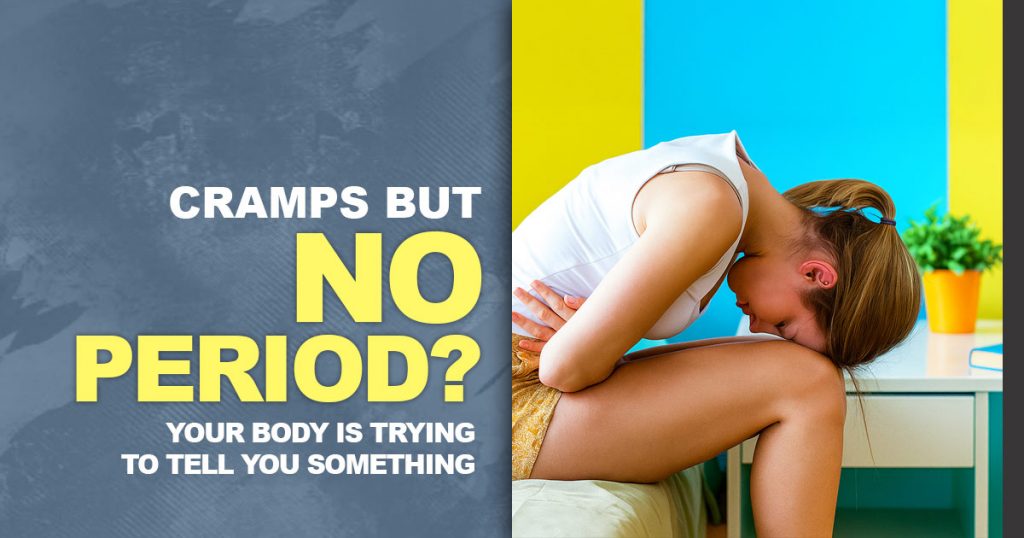For many women, menstrual cramps are a familiar, if unwelcome, part of life. In fact, studies show that up to 90% of women of reproductive age experience period pain at some point. It’s a signal most of us have learned to recognize. But what happens when you get that familiar feeling of menstrual cramps but no period follows? It can be confusing and leave you wondering, why am I cramping but no period? Some people even describe this sensation as a phantom period—all the symptoms without the main event.
This experience is more common than you might think, and it has a wide range of potential causes. Let’s explore what it could mean when you have cramps but no period.
Common, Cycle-Related Reasons for Cramping
Before jumping to serious conclusions, it’s important to know that many causes of cramping are tied to your normal hormonal cycle, even if bleeding isn’t present.
Ovulation Pain (Mittelschmerz)
About 10 to 14 days before your period, one of your ovaries releases an egg. For some, this process can cause a brief, sharp, or dull ache on one side of the lower abdomen. This is a classic case of cramping but no period, and it’s a perfectly normal sign of ovulation.
Your Period is Simply Late
If you find yourself thinking, “my period is 4 days late but I have cramps,” it could be that your body is gearing up for menstruation. The same hormonal shifts that cause the uterine lining to shed can trigger cramping a few days in advance. Stress, changes in diet or exercise, and travel can all delay your period, leaving you with the feeling of cramps but no period yet.
Early Pregnancy and Implantation
One of the most common answers to the question “what does it mean when you have cramps but no period?” is early pregnancy. Around 6 to 12 days after conception, the fertilized egg attaches to the uterine wall. This process, called implantation, can cause mild, temporary cramping that feels very similar to period pain. If you are sexually active and have missed your period, taking a home pregnancy test is a good first step.
When Cramping Signals an Underlying Condition
While often benign, sometimes cramping without a period can be your body’s way of signaling that something else is going on. It’s important to pay attention to the type of pain and any other symptoms you might have.
Endometriosis
This is a condition where tissue similar to the lining of the uterus grows outside of it, on organs like the ovaries or fallopian tubes. This tissue responds to hormonal changes, which can cause chronic pelvic pain and cramping at any point during your cycle, not just during your period.
Ovarian Cysts
These are fluid-filled sacs that can form on the ovaries. While most are harmless and go away on their own, a larger cyst can cause a persistent dull ache or sharp pain. If a cyst ruptures, it can cause sudden, severe cramps no period-related, and requires medical attention.
Pelvic Inflammatory Disease (PID)
PID is an infection of the reproductive organs, often caused by an untreated STI. It can lead to cramping, pelvic pain, and abnormal vaginal discharge. Prompt treatment with antibiotics is crucial to prevent long-term complications.
Digestive Issues
Sometimes, the issue isn’t gynecological at all. Conditions like Irritable Bowel Syndrome (IBS) or Inflammatory Bowel Disease (IBD) can cause significant abdominal cramping, bloating, and gas. This is a key answer to “why is my stomach cramping but no period?”—the pain might be originating from your intestines, not your uterus.
Appendicitis
This is a medical emergency. Appendicitis causes pain that often starts near the belly button and then moves to the lower right side of your abdomen. The pain gets progressively worse and may be accompanied by fever and nausea. If you experience this type of sharp, localized pain, seek immediate medical care.
Your Health is Non-Negotiable: Knowing the Red Flags
The biggest piece of advice is simple: listen to what your body is telling you. While this post can offer possibilities, it can’t replace a proper diagnosis. If your cramps are mild and you suspect your period is just late, it’s often fine to wait and see.
However, you should never ignore persistent or severe symptoms. If you experience severe cramps no period accompanies, if the pain is located only on one side, if it gets progressively worse, or if it comes with a fever, dizziness, or heavy spotting, it’s time to call a doctor. Don’t hesitate to seek professional medical advice. Your peace of mind and your health are always the top priority.

